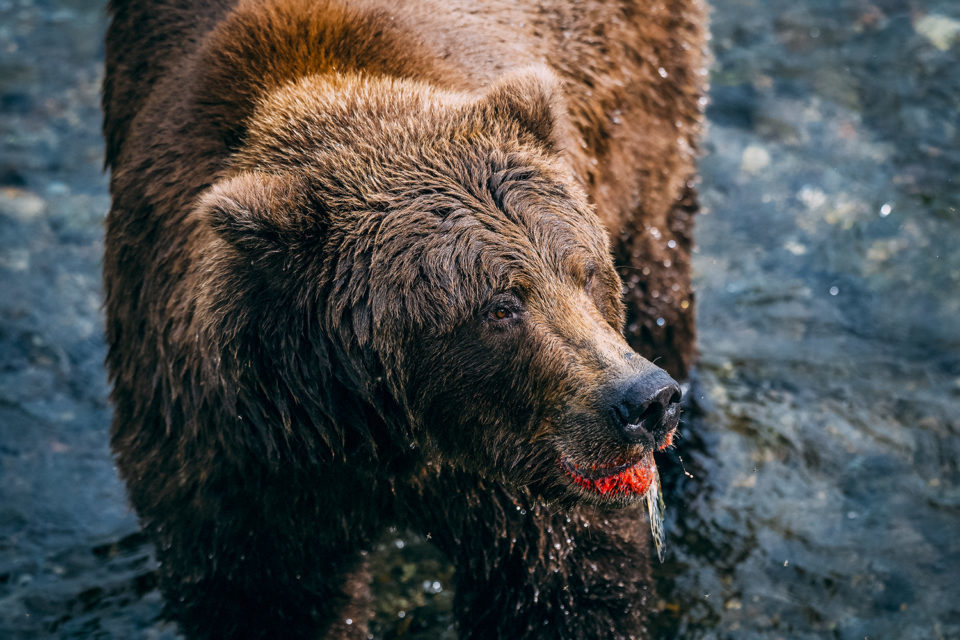
How to be a wildlife and surf photographer
If you’ve admired professional surfing photos from the past decade, chances are they’ve been taken by photographer Kirstin Scholtz.
South African-born Kirstin began her career with the World Surfing League in 2008, and for nine years was the only female surf photographer on the payroll as she travelled the globe capturing the world’s pros.
Perhaps her most iconic work is the shot of Mick Fanning hugging Julian Wilson after his shark attack in South Africa in 2015.
Never one to stay still for long, once she excelled in her field (for which she was recently named the best female surf photographer by Tracks magazine), Kirstin was yearning for a new challenge. This life-changing moment was delivered while on tour at Jeffrey’s Bay when visiting the Chipembere Rhino Foundation with Kelly Slater and Owen Wright.
“We were part of a rhino notching exercise, joining the veterinary team to put a tracking collar on her foot and GPS implant in her horn,” she says. “Listening to the sound of her powerful breathing and watching her enormous body shake from the sedative brought me to tears. I was trying to shoot images, but I couldn’t stop crying. From that moment, something in me changed.”
She crossed over from one adventurous setting to another, leaving the WSL and taking the reins as the photographer for WildArk – a conservation start-up founded in Sydney which has established its first wildlife conservancy, Pridelands, on the site of a former buffalo hunting property in South Africa.
Kirstin, who now calls Jan Juc on Victoria’s Surf Coast home, travels the world photographing wild zebras, rhinos, lions, elephants, and profiling the people trying to save them.
She’s photographed Mick Fanning in Alaska while raising awareness for wild salmon, ventured to Zimbabwe to see the work of ‘elephant whisperer’ Nick Murray – who can read their behaviour so well he can walk up to wild elephants on foot – and have an exhilaratingly close encounter with a leopard at Pridelands.
“We were setting up drinks around the fire next to one of the waterholes when an enormous leopard ran out of the bushes, not two metres in front of me!” she says. “All I remember is the deep breathing sound it made as it sprinted past. I had my camera in my lap, but it happened so fast I didn’t even take a picture.”
Chasing a life of adventure can take some serious preparation – both physically and mentally. We asked Kirstin for her advice for those hoping to carve a similar courageous path.
Search for a good mentor
While it’s important to build your own style to set you apart, there’s nothing better than shadowing someone you respect to learn the foundations. Kirstin credits her mentor, the world’s first digital surf photographer, Pierre Tostee, as the person who opened her eyes to the thrills of surf photography. “I somehow managed to land myself a job with him shortly after finishing university; he was incredibly generous with his knowledge and gave me so many opportunities,” she says. “This was the launching pad for my career. After a few years with Pierre, I was ready to make my own way and moved to the Gold Coast.”
Work hard. Then work even harder.
Surf photography is a competitive field, and it can take time to not only perfect your craft, but also to gain approval from your peers. “Admittedly it was a tough start, and it took a few years to earn the respect of the other photographers and the surf industry in general,” Kirstin says. “But I put my head down, I worked hard and thrived off the enormous amount of inspiration and healthy competition shooting alongside many of the greats.”
It’s not for the faint-hearted
Kirstin’s top memory from her time with WSL wouldn’t be out of place in an action film. “We were at Teahupoo in 2011 and the swell was so massive, the coast guard called Code Red to keep everyone out of the water,” she explains. “But it didn’t stop the 100 boats and jet skis heading out into the line-up, or me. I managed to beg and bribe a ride out there. I remember looking straight up at a wall of water in front of us and seeing at least five other boats ahead of us on the wave, with everyone hooting and crashing into the back of each other just to get over the breaking wave in time. It was horrific! But I got some cool shots, which made it worth it.”
It can break your heart
As well as spectacular highs, be prepared for some devastating lows. Kirstin often feels helpless in her plight to help the wildlife of Africa, a feeling most recently highlighted on a trip to the Northern Kruger National Park when she found a young female elephant caught in a snare. “She was trying to sooth the injury in the mud but had become stuck as she couldn’t put any weight on her snared foot,” she says. “Her ears were flapping, and she kept rubbing her trunk across the snare wound. There was absolutely nothing we could do for her. I don’t think I have ever sobbed so hard in my life.”